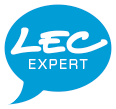The Principles of LED
Download the PDFWhat is an LED? How does it work, and what kinds are there? How do you get colour and white?
A Light-Emitting Diode (LED) is an electronic component with two contacts. When electricity is applied, it emits light.
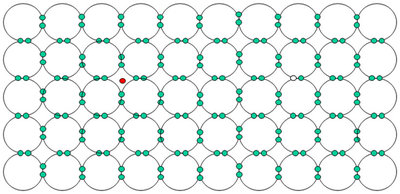
How an LED works
An LED has a standard electric diode architecture with:
- on one side: type N dopant containing free electrons
- on the other side: type P dopant with the absence of electrons (called holes).
Polarizing the diode beyond a certain level, called the threshold voltage, makes the unit able to pass charge, and the charge carriers (electrons and holes) become mobile.
This produces an electric current along the diode. When current flows between two zones of the semiconductor, an electron‑hole pair recombines at the junction of the two zones.

Functioning LED traversed by an electric current © LEC
The essential difference between a standard diode and an LED is that an LED uses a material that causes this recombination to emit radiation (in this case light).
Extremely stringent controls on manufacturing processes in the microelectronics industry now produce materials whose atoms are perfectly aligned. This virtually faultless regularity of semiconductors along with many technological optimisations, allows LEDs to suppress losses and achieve high efficiencies (up to 200 lm/W off a production line, and up to 303 lm/W under laboratory conditions).
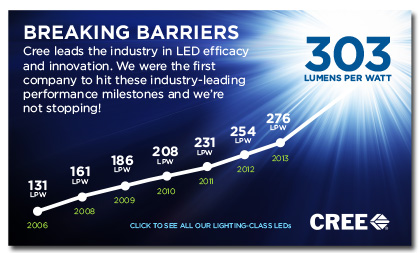
LED Colours
Along with performance improvements, LEDs have benefitted from advances in electronics over the past 30 years in the field of colour. Initially restricted to red and amber, the emergence of new materials has opened up vast colour possibilities. Diode substrates now include:
- AlInGaP (aluminium, indium, gallium, phosphide), for red and amber diodes.
- InGaN (indium, gallium, nitrogen), offering a wide range of blues to greens to white... and even a type of amber that is actually a white so hot that it glows orange.
LED White
Technically, two solutions exist for LEDs to make white light:
- RGB (red, green blue) LED – produces white as an additive process. This is not the traditional solution for standard lighting, but it is used in marker lighting and for festive lighting, especially when colour is part of the programmed scenarios.
- Blue LED + a layer of phosphorus yellow on the LED, turning the blue into white light.
Types of LED
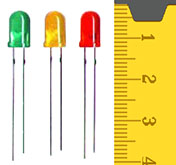 5 mm: diode with 5 mm traverse distance. “Traverse” refers to the travel distance between the terminals. The luminous source is on the side opposite the solder. This is the LED format that everyone is familiar with, as it is the oldest. Embedding a chip with a transparent dome allows control of flow and viewing angle. However, it has low maximum output, in the order of 0.03 W, with a 50,000 hour lifetime.
5 mm: diode with 5 mm traverse distance. “Traverse” refers to the travel distance between the terminals. The luminous source is on the side opposite the solder. This is the LED format that everyone is familiar with, as it is the oldest. Embedding a chip with a transparent dome allows control of flow and viewing angle. However, it has low maximum output, in the order of 0.03 W, with a 50,000 hour lifetime.
5mm diode © fr.wikipedia.org
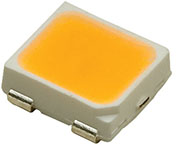
- SMD: Surface Mounted Device. It resembles a standard “electronic chip”. It is an LED soldered onto an electronic circuit. Often with no lens, the viewing angle is 120°.
ML-B Series, SMD diode © Cree
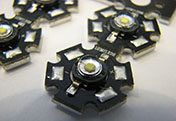
- Power diode: This is also an SMD diode but is designed to output more than 1 Watt. It has good thermal contact with the electronic circuit, which allows it to dissipate heat. The Lumileds LUXEON series, which first introduced this family of power diodes in the early 2000s, gave LEDs a major technological boost by launching a lighting revolution that we are still enjoying today.
LUXEON, power diode © Lumileds
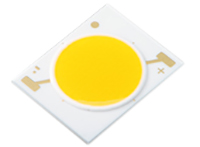
- COB : Chip on Board.This is the most recent type of power diode. Some models can output more than 100 W. The lens surface has been enhanced to maximize lm/cost. The only disadvantage is the inability to focus its output.
NFSLJ108B, COB diode © Nichia
As you can see, LEDs are a highly technical component that have benefitted from every advance in microelectronics over the past 50 years. LED advances have totally disrupted the traditional lightsource industry. However, to fully benefit from its potential, we have to separately optimise every element involved in the process, including power supply, lens technology, thermal aspects, and the rest...
-
Download the PDF
- Published on 11 July 2016
- Category: Lighting techniques
- Tags : 5 mm - colour - High power LED - LED - LED technology - SMD - white
